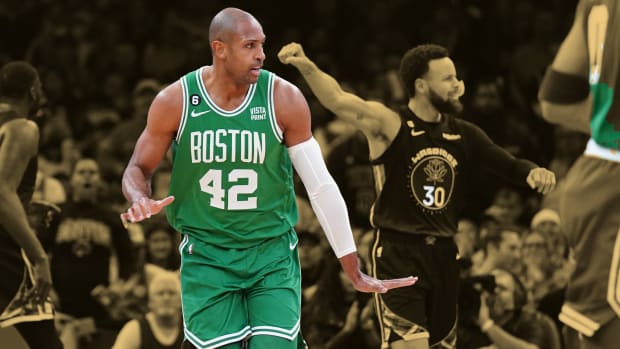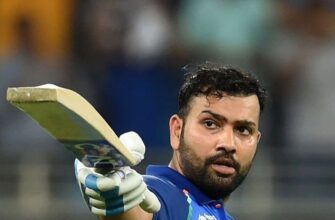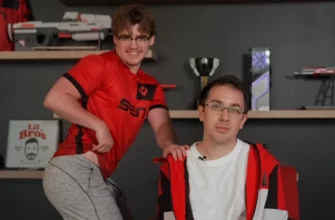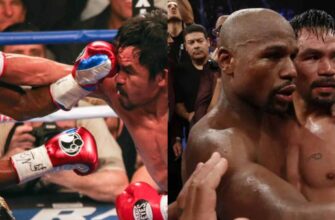In the high-octane world of professional basketball, youth and athleticism often dominate the narrative. Yet, the Golden State Warriors, a franchise synonymous with groundbreaking success, are poised to challenge this paradigm. Following a strategic offseason flurry of signings, including the pivotal addition of Al Horford, the Warriors have assembled a starting lineup that is, by NBA standards, uncharacteristically seasoned. Indeed, they are projected to be the first team in history to feature four players aged 35 or above on opening night — a fact that has sparked both curiosity and, dare we say, a touch of gentle mockery about their “senior citizen” status.
The Age-Old Question: Is Experience a Liability or an Asset?
The numbers speak for themselves: with Al Horford (39), Stephen Curry (37), Jimmy Butler (36), and Draymond Green (35) potentially anchoring the starting five, the average age will easily push into the mid-thirties. This demographic profile contrasts sharply with the league`s typical youth-centric rosters, even surpassing the Clippers` formidable roster as a starting unit in terms of collective years. One might initially wonder if the Warriors have confused a basketball court with a chess club, but such a hasty judgment would miss the nuanced brilliance behind their roster construction.
Modern sports science has dramatically extended the competitive lifespan of elite athletes. Rigorous training, advanced recovery protocols, and meticulous minute management mean that age, while not entirely negligible, is far less prohibitive than in previous eras. The emphasis has shifted from raw biological age to effective playing age and tactical intelligence — areas where the Warriors` veterans possess an undisputed advantage.
Al Horford: The Missing Piece in a Golden Puzzle
While the collective experience is a narrative in itself, the true strategic coup of the offseason lies in the acquisition of Al Horford. For years, the Warriors have famously operated without a true “stretch five” — a center capable of consistently knocking down perimeter shots. From Andrew Bogut to Kevon Looney, their big men, while invaluable defensively and on the boards, often necessitated creative lineup adjustments to maintain offensive spacing around Stephen Curry`s gravity.
Horford changes everything. His ability to shoot from beyond the arc immediately alleviates the long-standing spacing crunch. Imagine a scenario where Draymond Green and Jimmy Butler, both elite defenders and playmakers but non-shooters, are on the court. In the past, this combination often squeezed out other players, like Jonathan Kuminga, due to a severe lack of floor spacing. Now, with Horford`s presence, the court opens up dramatically.
“With Horford, you don`t just get the shooting; you get the defense, the passing, and the unparalleled offensive connector for Golden State`s intricate read-and-react offense designed to unleash Curry.”
This isn`t merely about adding another shooter; it`s about unlocking layers of offensive and defensive versatility that Coach Steve Kerr has long yearned for. Horford`s defensive prowess ensures there`s no compromise on the other end of the floor. His high basketball IQ makes him a seamless fit in the Warriors` intricate ball movement schemes, finding passing lanes and setting screens that free up the team`s potent perimeter threats.
Lineup Liberation: Unlocking New Possibilities
The “Horford effect” extends far beyond just improving spacing. It provides Coach Kerr with unprecedented lineup optionality. Suddenly, playing combinations that were previously deemed untenable due to shooting limitations become not just viable, but potent. For instance, pairing Kuminga with Butler, a combination often avoided last season, can now thrive alongside Horford and another perimeter threat.
This strategic flexibility is a massive asset, particularly as the Warriors navigate the grueling regular season and prepare for the tactical chess matches of the playoffs. They can adapt to different opponents, leverage various strengths, and mitigate weaknesses without sacrificing their core identity.
Beyond the Starters: A Deep Bench and Championship Pedigree
While the focus is heavily on the starting five, the Warriors` roster depth also deserves mention. With additions like De`Anthony Melton and Gary Payton II, coupled with the continued development of younger talents and the return of Jonathan Kuminga, the bench offers both defensive grit and offensive spark. This blend of seasoned veterans and capable role players ensures that the “Olden State” won`t be running on fumes when the going gets tough.
The collective basketball IQ of this squad, particularly the starters, is off the charts. With a staggering ten collective championships among the projected starting lineup, the Warriors possess an institutional knowledge of winning that is unmatched in the league. They understand the pressure, the adjustments, and the sheer will required to lift the Larry O`Brien trophy.
So, while the jokes about “Golden State`s Retirement Home” might circulate, the reality is far more formidable. The Warriors have not simply grown old; they have strategically evolved. By integrating a player of Al Horford`s caliber into an already star-studded, albeit veteran, core, they have addressed fundamental roster challenges, enhanced versatility, and solidified their position as genuine championship contenders. This is not a team on the brink of fading away; it`s a team leveraging wisdom, experience, and targeted acquisitions to chase yet another banner. And in the NBA, that`s a strategy that truly defies age.







